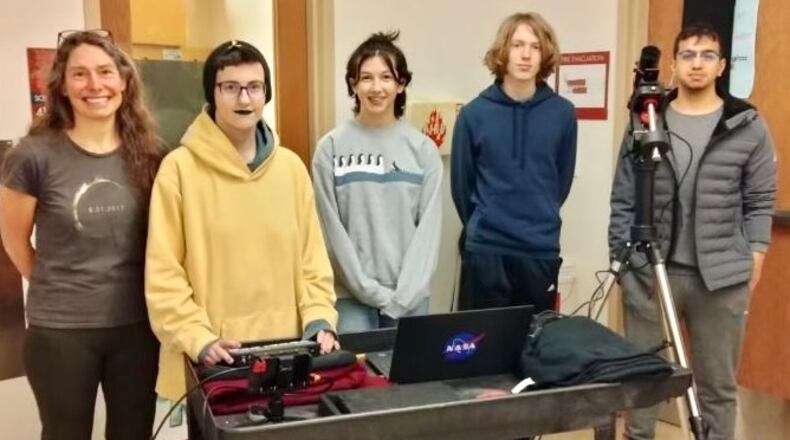The next total solar eclipse in Ohio after this will come 75 years later in 2099.
>> How long will Monday’s total solar eclipse last?
It’s literally a once-in-a-lifetime learning opportunity, said Talawanda High School biology instructor Heidi Schran, whose students are one of only a few in Ohio to use a federal science grant to monitor the celestial event with special equipment and feed images to NASA as part of national program.
“It’s a unique opportunity and truly amazing,” said Schran.
“We’re one of only 14 student groups across the country that will be feeding live images to a NASA website during the eclipse,” she said.
That’s possible thanks to her earning a grant to purchase a digital telescope, laptop and other equipment that have all been the focus of interest and study for her Talawanda junior and senior students.
Monday afternoon, the moon will line up perfectly between the Earth and the sun, blotting out the sunlight. It will take just a couple hours for the moon’s shadow to slice a diagonal line from the southwest to the northeast across North America, briefly plunging communities along the track into darkness.
Most schools, locally and nationwide, are closed Monday.
Fifteen U.S. states — including a wide swath of southwest Ohio and Butler County — will be plunged into varying degrees of mid-day darkness for a few minutes during the historically rare eclipse.
The solar totality can last as long as 7 1/2 minutes in some parts of world. The last time the world saw more than seven minutes of totality was in 1973 over Africa. That won’t happen again until 2150 over the Pacific Ocean.
The rarity of the astronomical event has captured the interest of students of all ages, said Schran.
“Me and my team of students will be at the high school,” she said. “We’ll have about three minutes of totality (darkness).”
The lead-up to the eclipse has presented many new chances for Carrie Murray’s sixth-grade students at Lakota’s Woodland Elementary in Liberty Twp.
A veteran of nearly three decades of science teaching, Murray jumped at the chance to incorporate the real-life event into a variety of classroom lessons, including learning about the phases of the moon.
She will also have her students record in writing their at-home eclipse experience, which they will share with classmates in the days after the totality.
“I have been looking forward to this since the last, partial eclipse in this area in 2017,” said Murray. “And the students are very excited.”
About the Author
